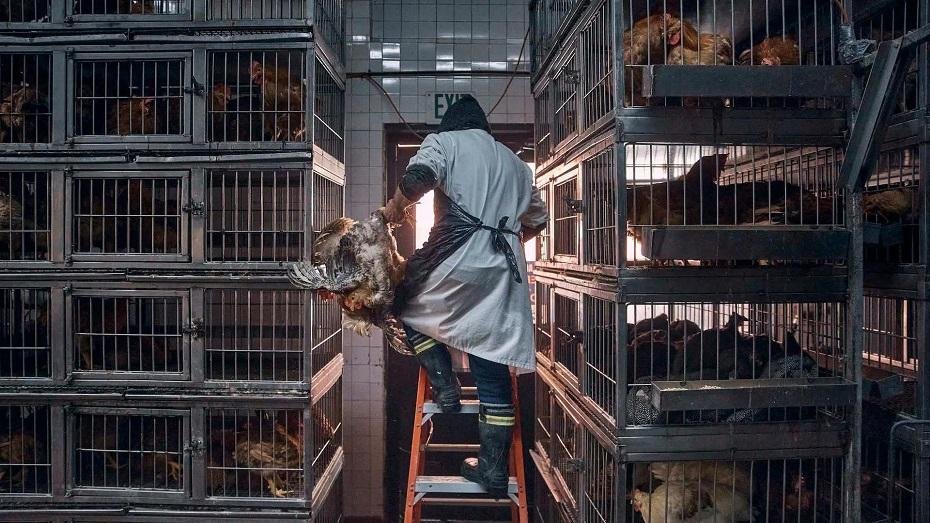The study comes as Ohio announced its first human case of H5N1 in a poultry worker who was hospitalized with respiratory symptoms but has since recovered.
The new study of vets found that three of the 150 who signed up to be tested – or 2% – had antibodies against bird flu in their blood. Antibodies indicate that the vets were infected with bird flu, although they didn’t have symptoms.
It is one of three studies on bird flu that were delayed after the Trump administration issued a pause on outside communications from federal health agencies last month.
The study on blood testing of vets who treat cows was released Thursday in the Morbidity and Mortality Weekly Report, which is published by the US Centers for Disease Control and Prevention.
The other studies, which still have not been released, reportedly detail transmission between cats infected with bird flu and people in the same household, and discuss H5N1 detections in wastewater.
Blood tests in veterinarians
For the research, called a seroprevalence study because it looks for evidence of infections in the blood to try to determine a population’s exposure to disease, researchers from the CDC and the Ohio Department of Health went to the annual meeting of the American Association of Bovine Practitioners, which was held in September in Columbus.
Before the meeting, the CDC emailed members to ask whether they’d like to participate. It enrolled 150 veterinarians from 46 states and Canada who had their blood drawn at the conference. Just over half were from states known to have positive dairy herds, and 1 in 4 said they’d worked with infected cattle.
Three vets’ blood tests came back positive for antibodies to the H5N1 virus, even though none of them had experienced any memorable symptoms or worked with cows that had tested positive for H5N1. One vet who had antibodies had worked with infected poultry, however, according to the study.
One veterinarian who tested positive said they’d treated cattle in Georgia and South Carolina, two states with no reported infections in cows.
The report’s authors write that their findings suggest there may be H5N1 infections in cows in states that haven’t reported any, and they highlight the need for faster and more comprehensive testing of animals and milk to identify infected herds.
Dr. Jennifer Nuzzo, who directs the Pandemic Center at Brown University, said the study had good news and bad news.
The bad news, she said, is that bird flu is spreading where we don’t have eyes on it.
“I think the bottom line here is that there are vets who may have been infected in states that hadn’t reported outbreaks, which is bad,” Nuzzo said. “It speaks to the need to improve our surveillance so that we can better detect when outbreaks are occurring on farm so we can protect people.”
The good news is that the researchers didn’t see evidence of a large number of under-the-radar infections.
“We’re not missing some huge submerged iceberg of mild infections that would possibly make us think that this virus could be much milder than what it has historically been,” Nuzzo said.
Other experts said the study spoke to some of the challenges veterinarians face in protecting themselves from the virus.
“This report tells us is that this virus can infect and present without symptoms in animals and that enough virus is shed either directly from animal to veterinarian or via touching surfaces to infect the vet,” said Dr. Erin Sorrell, a senior scholar at the Johns Hopkins Center for Health Security. Nuzzo and Sorrell did not work on the new study.
Bird flu infections in humans remain rare
There is no evidence that H5N1 is spreading from person to person. The CDC says the risk to the public remains low, although people who work on farms and with infected animals, or who have backyard poultry flocks, are at higher risk of an H5N1 infection.
Since March 2024, there have been 68 confirmed H5N1 infections in people in the US. All but three have had known exposures to animals.
Two of those cases have been severe, including an older person in Louisiana who died last year.
The most recent serious infection was a farm worker in Ohio who had contact with infected birds. Ohio announced its first bird flu case in a human on Wednesday.
That person was hospitalized with respiratory symptoms but has since recovered, according to a health official familiar with the details of the case who was not authorized to speak to the media.
The subtype of the virus has not been confirmed, but it is probably the newer strain, D1.1, the official said.














